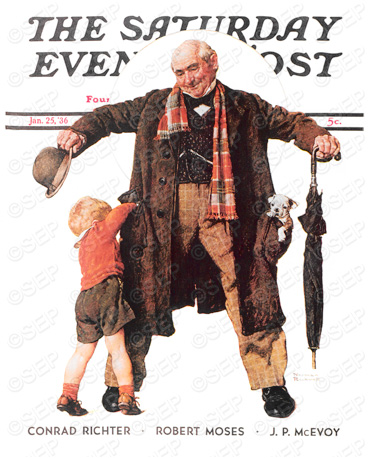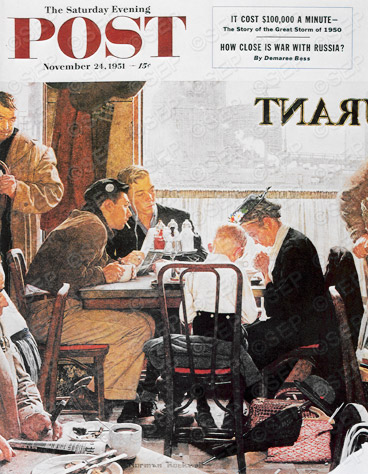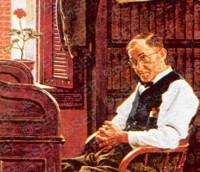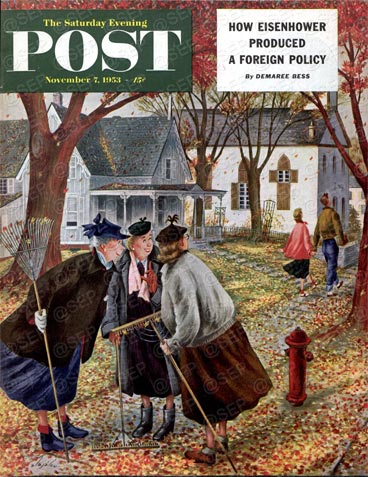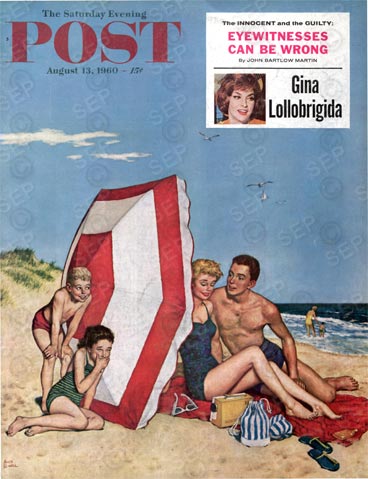Cartoons: Holiday Shopping
Holiday shopping can be stressful, so we hope these cartoons help you keep your sense of humor!
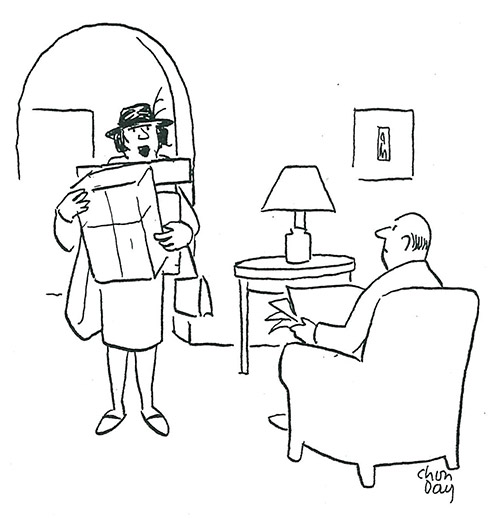
January/February 1999
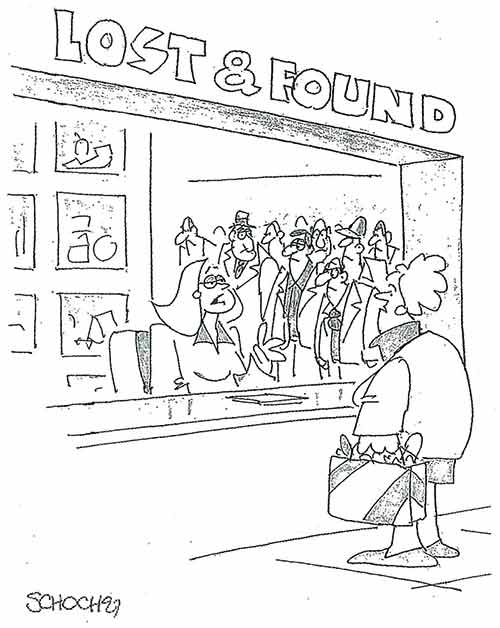
November/December 1998
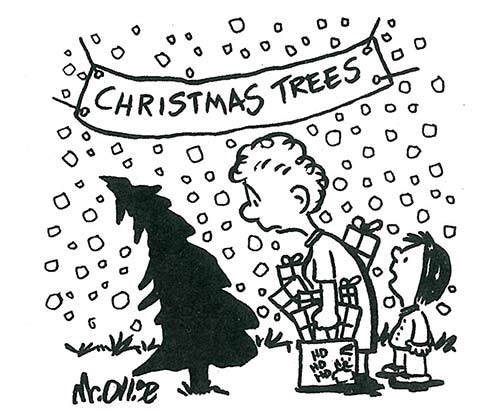
November/December 2003
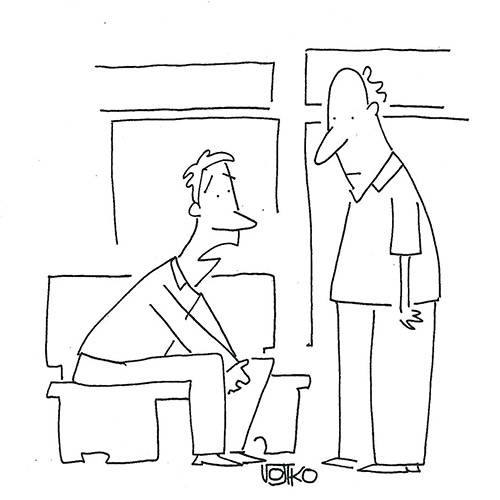
November/December 2003

November/December 1994
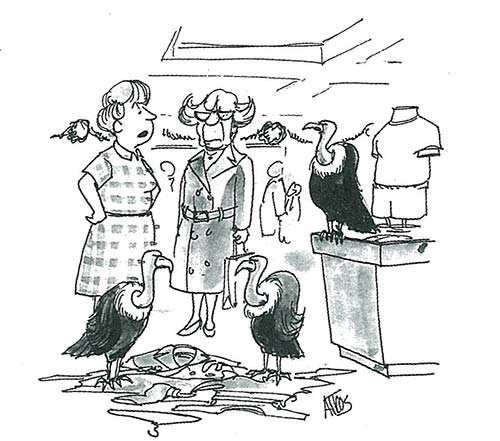
November/December 2003

December 1982
Labor and Housing Shortage Cartoons of WWII
Unemployment sunk to record low levels during World War II with the abundance of war jobs. Accompanying the manufacturing spike was a shortage of housing in Washington D.C. and other cities around the country. Cartoonists depicted the hilarity of human nature in a time of shortage in these cartoons from World War II America.
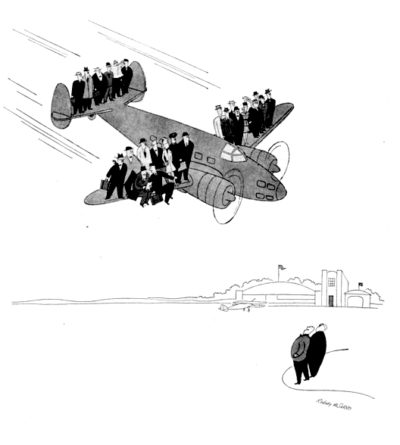
“Here comes the Washington plane now.”

“Tell you what I’ll do, Miss Waters, if you’ll stay here instead of joining the Waacs, I’ll make you vice-president.”

“Doctor, there are some patients waiting.”

“Do you suppose he would let us have her room?”
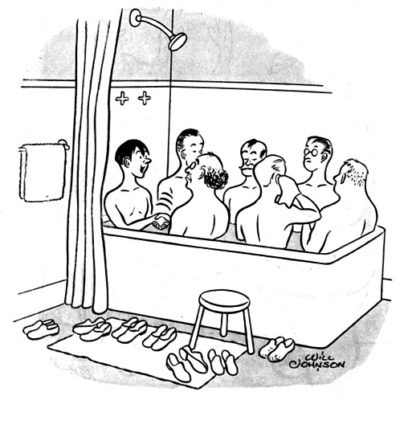
“How do you do, how do you do — I’ve always wanted to meet a senator.”


WWII Cartoons: Hunger Pangs on the Homefront
Any American who lived through World War II can tell stories about rationing sugar, butter, meat, coffee and other foods. During U.S. involvement in the war, civilians registered for books of stamps required to purchase rationed products. Rationing helped to conserve resources for the war effort, and Americans tolerated it with a sense of pride and duty. Citizenship runs short, however, in this WWII cartoon collection. It’s all about wartime food rationing, and these citizens are fed up!
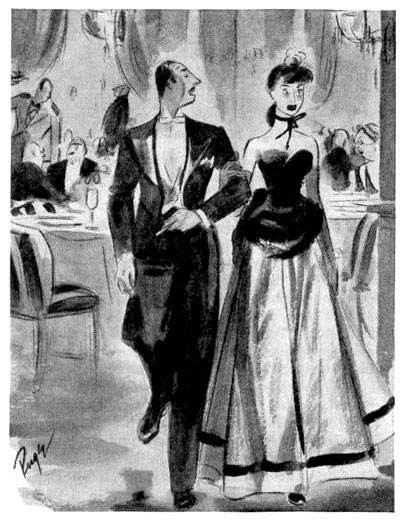
“I’ll engage the maî·tre d’hô·tel in conversation, and you clean out the sugar bowl.”
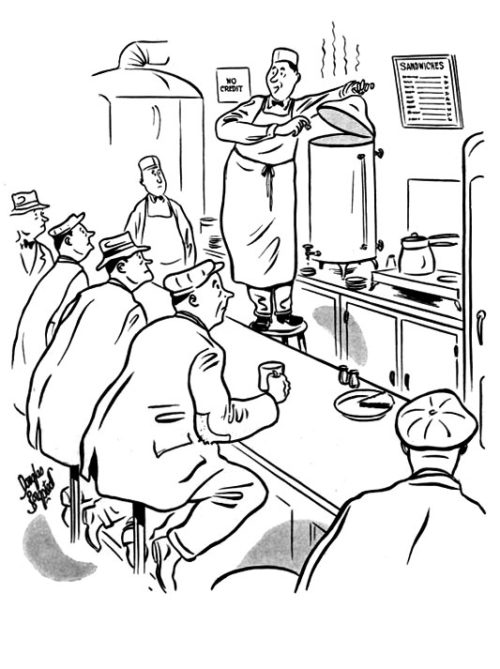
“How’ll you have your coffee, gents? One lump or two?”
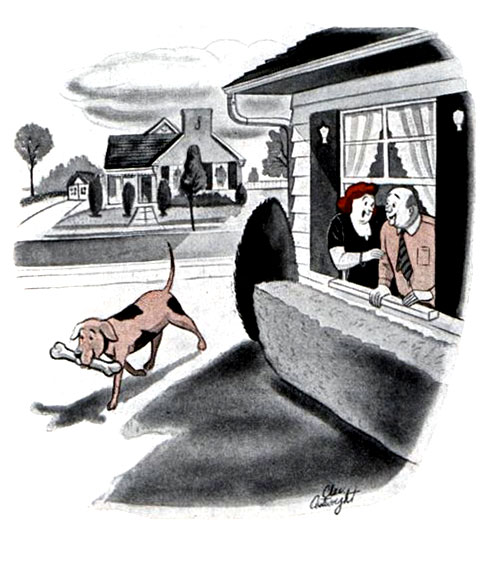
“You watch where he buries it while I go put some water on to boil.”

“When the folks go to bed, we’ll slip out in the kitchen and open a can of peas or something.”
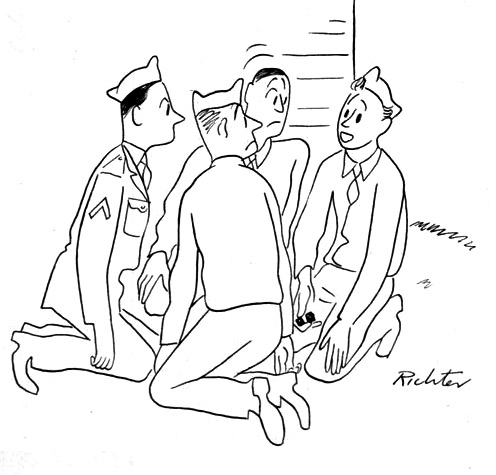
“Shall we play for money?”

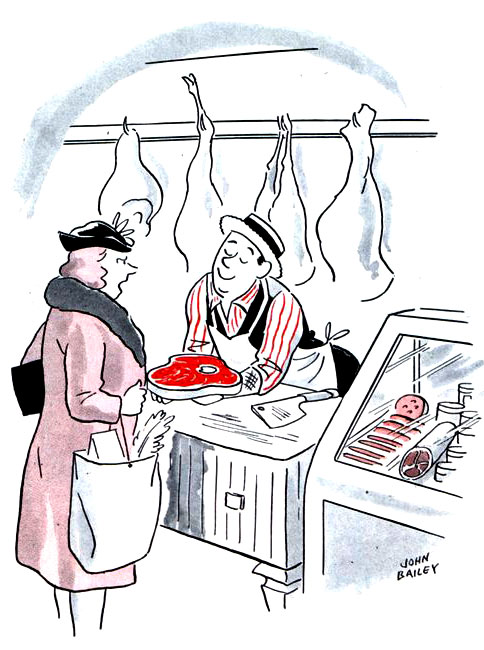
“Why so polite all of a sudden — been hearing peace rumors?”

Tire-less Toons: Rubber and Fuel Rationing During WWII
Tires and fuel were the first items to be rationed in America during World War II. This put a dent in the nation obsessed with automobiles, and The Saturday Evening Post’s cartoonists capitalized on the road rage!

“Tell me, Dave — she gonna be okay?”

“Malcolm and I feel that our tire problem will soon be solved.”



“I award you this bronze medal for collecting the most scrap. Now, young man, what are you going to do with this bronze medal?”

World War II Women in Industry
Women entered the workforce during World War II by filling in for unavailable soldiers in manufacturing, agriculture, government, and more. Popular icons like Rosie the Riveter symbolized the woman’s help in the war effort. We’ve assembled the best one-liners and most riveting cartoons featuring World War II women at work.

“I’m new here — which ones are wolves?”


“And when you go forth into the world, be it as riveters, welders, or mechanics, keep ever bright before you the slogan of Sweet Lawn Seminary — ‘A lady first, a lady always!’”
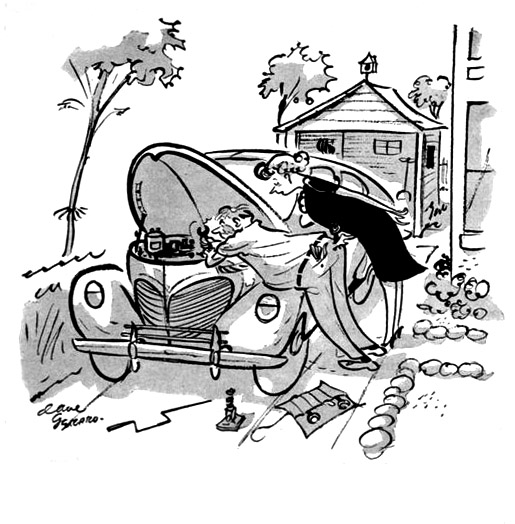
“You’d get along much better with a 5/16 instead of a 3/8 — and are you sure it’s the distributor? If you’d try a new condenser and set your timer forward to pick up the fire lag —”

“So, I says to the boss —”
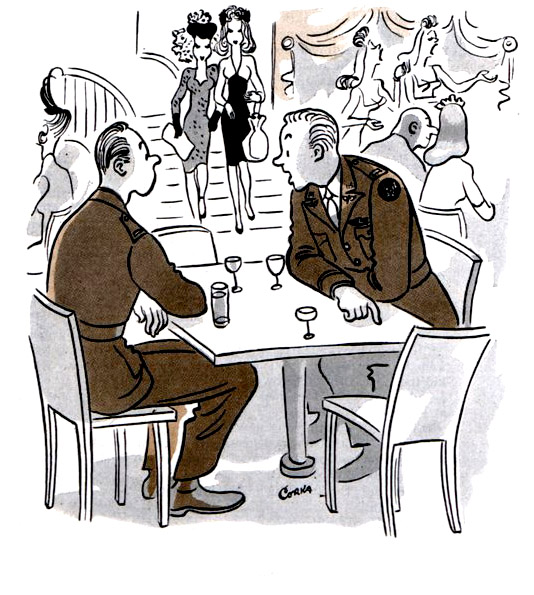
“Better say something nice about the propellers — she makes ’em.”
See more on women in industry in “Surprise! Women Do the Heavy Lifting during World War II.”
World War II Romance
Dating is complicated, and this is never truer than in wartime! We have strung together a selection of sentimental cartoons from the Second World War. Going steady was different for soldiers and civilians in the ’40s.


“Well, frankly, if he’s in the armed forces, you don’t need anything at all!”

“This is Mr. Thompson — c’est la guerre!”
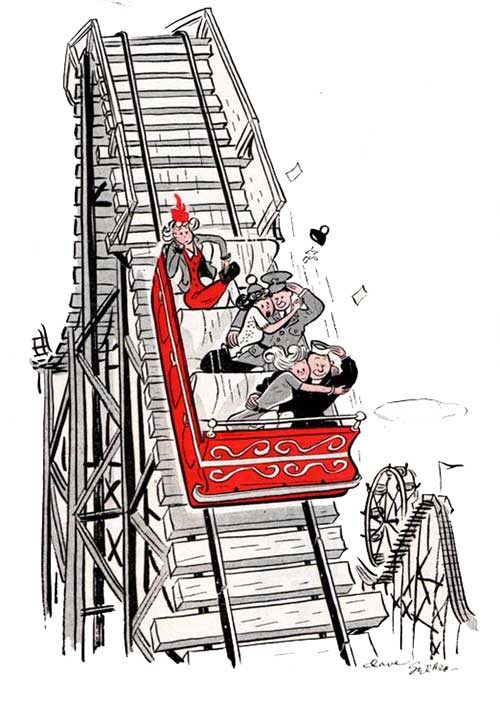

“Her fiance is getting a four-day furlough and they don’t want to waste any time.”

“Oh, no, I couldn’t let you take me to 222 Elm Street, the big white house three blocks from here, where I live. It’s against the rules.”
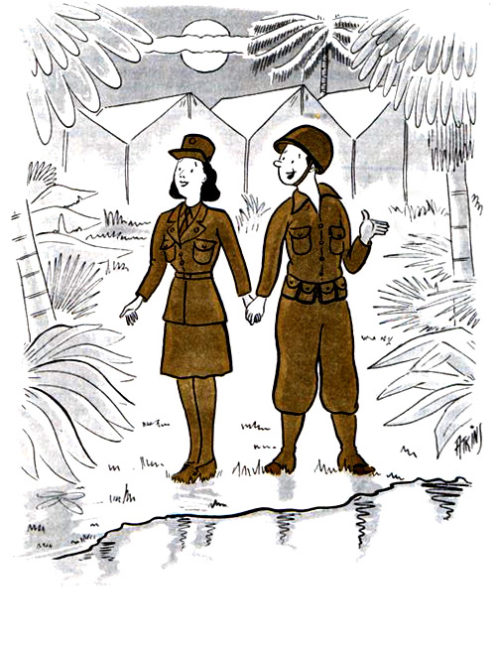
“This is what we always dreamed of, dear, being alone together on a South Sea island.”

“Aren’t you overestimating the power of a uniform?”
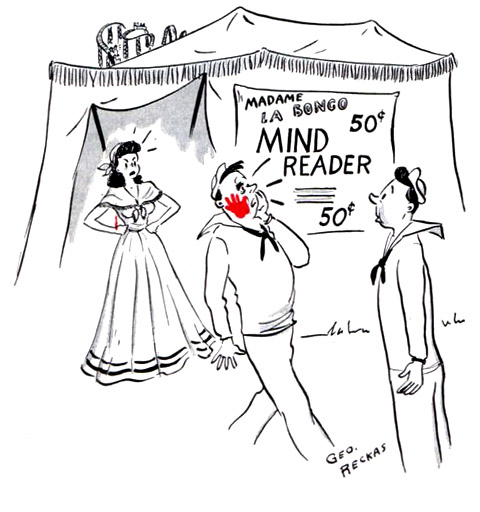
“She’s very good!”
Cartoons from the World War II Home Front
Life changed dramatically for civilians during WWII. The homefront was characterized by sacrifice of luxuries and enrollment in the various duties of the Civil Defense Corps. The World War II-era cartoons in this collection focus on the uncertainty and paranoia of civilians under threat of attack, all served with a dollop of black humor.

“Oh, come now. With all that’s happening these days you don’t think you could frighten me?”
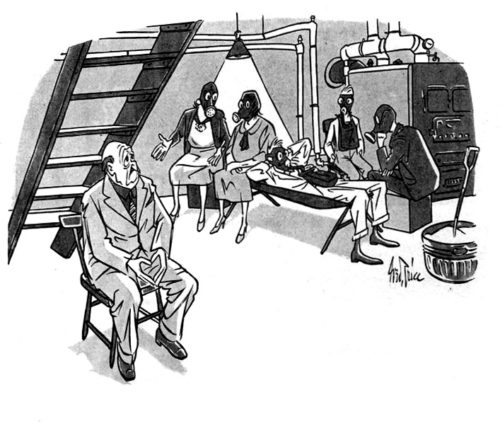
“I’m so glad Mr. Burley is a fatalist. We were one mask short.”

“I think I’ll quit, boys — I find it impossible to concentrate on poker with the war going on.”
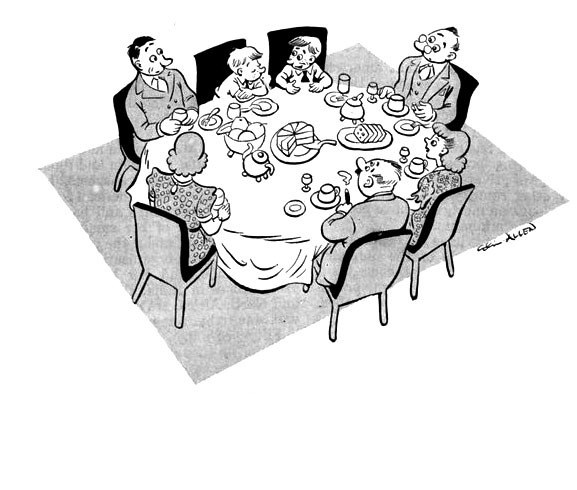
“Of course the Messerschmitt Me-109F has a high ceiling and speed, but don’t forget that our P-38 does 404 mph and climbs 35,000 feet, and also that our Turbo-supercharged B-17 carries 4 tons of bombs and outclimbs both the Me-110 and the Me-109F.”


“And, then, just to make absolutely sure, we always just sit in the dark.”

“What the heck did we do every evening before this war started?”
WAC Jobs: Women in World War II
Hundreds of thousands of American women served in the military during World War II. The new precedent of women involvement in areas previously reserved for men was a mark of the era. The cartoons in this collection derive their humor from the subversion of strict gender roles apparent in 1940s America.

“We’ll have to be quick, Mimi — I’m AWOL.”
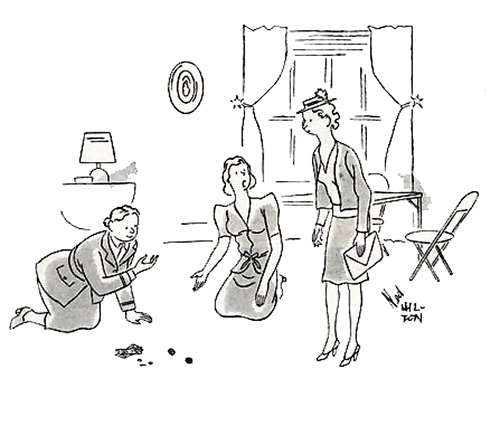
“It’s some game she learned in the Army.”

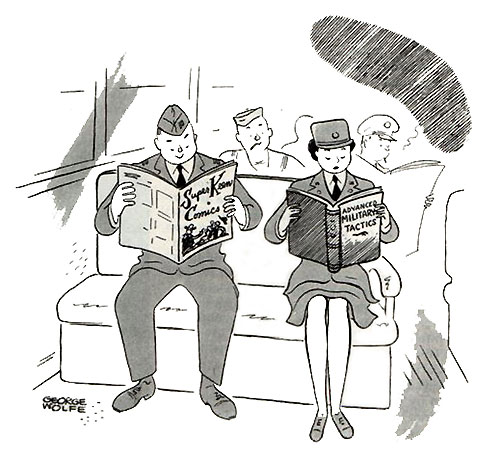


“It is unthinkable, Mildred — a Harrison always goes Army.”
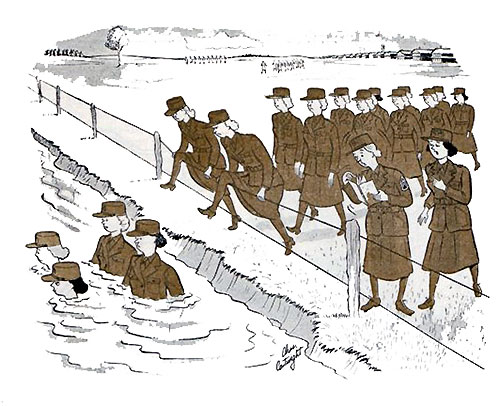
“I think the phrase ‘Column, halt!’ on the next page is what you’re looking for, Sergeant Ditmarle.”
Allied Farces: Cartoons from World War II
The Saturday Evening Post chronicled the war effort over 70 years ago, and we published cartoonists who found the humor in wartime. We salute the soldiers of World War II in this collection of some of our favorite cartoons depicting life on the base, in combat, or on deck.

“A horse bit me one time, but I never thought I’d be driven to a reprisal.”
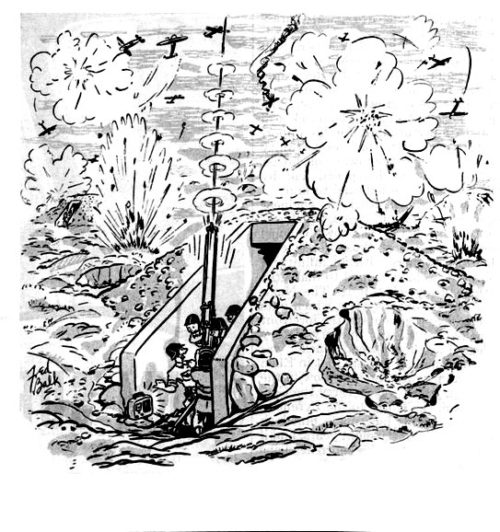
“How would you like to be in that guy’s shoes? Facin’ DiMaggio, with the bases loaded!”
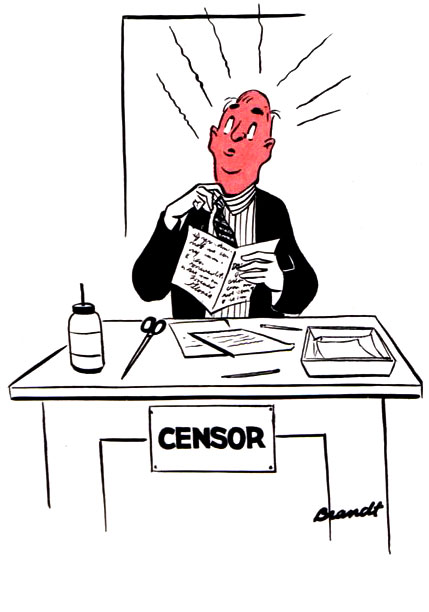

“I hope you’re not angry with me for taking you away from your friends.”

“Well, not exactly. But I HELP run it.”
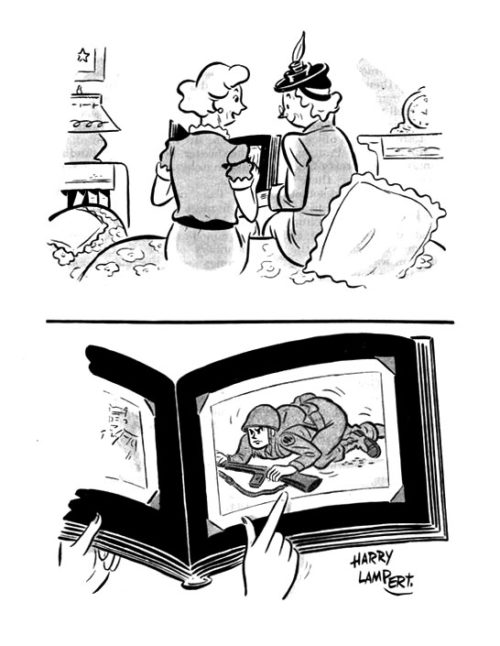
“And this is Junior learning to crawl!”
WWII Conscription Cartoons
During World War II men ages 18-65 were required to register with selective service. Across the country, American men waited for the “lottery” to call their number. Like other World War II conventions, conscription became a target in The Saturday Evening Post cartoons of the 1940s. Our cartoonists searched for the lighter side of local draft boards, draft classifications, and the dreaded rejection!
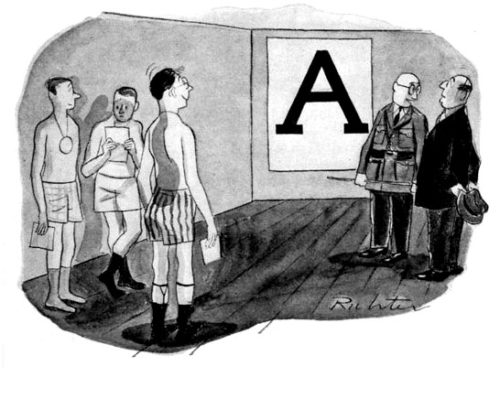
“We’ve relaxed our requirements just a bit.”
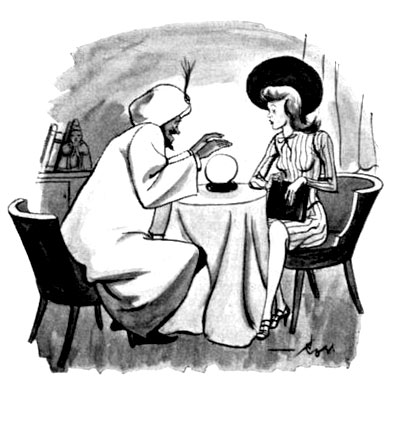
“Friends of the family? Oh, no, sir — we were just passing by.”

“I’ve been trying for 15 years to get my affairs in order, and now my draft board expects me to do it in 10 days.”
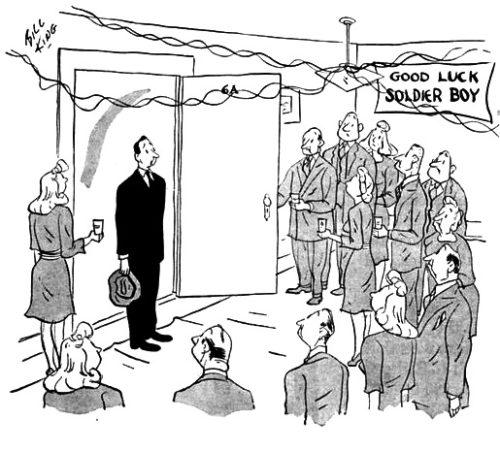
“I was rejected.”


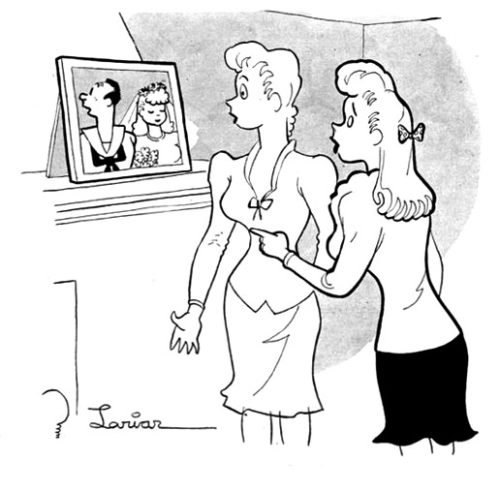
“He was recalled to duty just as the picture was taken!”
8 Tech Gifts Under $100
The latest trendy smartphone alone could set you back $650 or more. But plenty of cool and clever tech gadgets cost a Benjamin or less. Here are our faves:
High Flyer
Hobby-class flying drones can run hundreds of dollars, but the Hubsan X4 H107L (www.hubsan.com) is nicely priced at around $30 online. A diminutive quadcopter small enough to rest on the palm of your hand, the Hubsan X4 packs enough oomph for dazzling flying tricks that you control wirelessly via a handheld transmitter. Four LEDs — one in each corner — make the drone easy to spot on night flights. But keep your trips short: Flight time is about 7 minutes with a control distance of 100 meters.

$30
Workout Buddy
The Apple Watch is pretty, but it’s crazy expensive ($350 and up) for someone who wants a basic fitness tracker. The frugal alternative? Misfit Flash ($30, misfit.com) is a stylish wristband that monitors physical activity — miles traveled, steps taken, and calories burned — and sleep quality. Flash syncs with your Android or iOS smartphone, where the Misfit app tracks your fitness progress and lets you set exercise goals.

$30
Phone Catcher
Maybe there’s a smartphone klutz on your list, a special someone suffering from a chronic bout of the dropsies. Lifeproof (lifeproof.com) specializes in ruggedized phone cases for inhospitable environments: a sandy beach, ski slope, or even a mountaintop. The dirt- and waterproof LifeProof NÜÜD ($81 for the iPhone 6; $90 for the iPhone 6 Plus) survives drops from 2 meters (6.6 feet) and is remarkably slim for a tough and sturdy case.

As low as $81
Transformer
A standard tablet keyboard won’t bring glad tidings. But how about one that switches seamlessly between three devices: tablet, smartphone, and PC? Logitech Bluetooth Multi-Device Keyboard K480 ($50, logitech.com) connects wirelessly with up to three devices, and includes an integrated cradle for a phone and tablet. A left-side dial makes it easy to switch between devices: Tap out a text message on your phone, then flip the dial to begin writing a long document on your laptop or tablet — all on the same keyboard.

$50
Photo Enabler
Here’s one for the selfie fan on your list. Camkix Extendable Selfie Stick with Bluetooth Remote ($23, camkix.com) does pretty much what its name suggests — allow your narcissistic pal to take self-portraits with ease. The retractable stick extends from 11 to 40 inches, works with newer Android and iPhone models, and has a Bluetooth remote for controlling the phone’s camera shutter. Then again, you may not want to encourage this behavior.

$23
Sound Booster
Sure, a smartphone is handy for tunes on the go — but its speakers and headphones don’t do the music justice. The JBL Flip 2 ($100, jbl.com) is a portable wireless speaker with a 5-hour battery. It connects via Bluetooth to your smartphone (or other compatible device) to deliver clear audio with reasonably deep bass, given its soda can size. Another plus: A built-in microphone allows you to answer calls and use the Flip 2 as a speakerphone. A Christmas miracle? Not quite, but it’s still pretty cool.

$100
TV Enhancer
Roku 3 ($100, roku.com) is pricey as video streamers go, but it’s worth the $30 to $65 premium over competing set-top boxes. What sets it apart? Clever extras like voice search on the Roku 3 remote, which makes it far easier to search for titles, actors, and channels. The in-ear headphones plug into the remote, preserving the peace in the wee hours when you want to watch a show while your partner sleeps. Priced a penny under $100, Roku 3 delivers more than 2,000 channels from the Internet to your TV, including cord-cutter favorites like Netflix, Hulu Plus, and Amazon Prime Instant Video.

$100
Easy Reader
Big-screen smartphones outsell tablets by a wide margin, but the latter is still better for a lot of things, such as curling up with a good e-book. One of the best tablet deals this season is the Amazon Fire HD 6 — just $100 with free shipping (amazon.com). Don’t let the bargain price fool you. This 6-inch slate has a vibrant HD display, a speedy processor, and 8 GB of storage (4.5 GB available). For streaming movies, social media, and other light tasks, the Fire HD 6 is a great choice. Is $100 too much? Amazon unveiled a new $50 Fire tablet for the holidays. The 7-inch Fire is a notch below the Fire HD 6 in terms of speed and screen quality, but still good enough for reading and Web browsing. Its memory card slot adds up to 128 GB of additional storage, but don’t expect stellar photos from the so-so front and rear cameras.

$100
World Series
Whether a Mets fan, a Royals fan, or a disheartened Cubs fan — let’s face it. No one is completely immune to the lure of the October jamboree.
Serious Business
When the Series is on, pretty much everything stops.

Lonie Bee
October 8, 1960

Benjamin Kimberly Prins
October 4, 1958
America’s Fall Tonic
by Bozeman Bulger
The Saturday Evening Post, October 3, 1931—This October tonic, sipped for a week or 10 days, helps to locate old friends and create new ones, loosens the vocal cords, and causes excessive though pleasant loss of sleep.
The greater the business depression, the better this tonic seems to taste. Your American sports lover, or just plain American, may tighten up on some expenditures, but when it comes to settling his baseball championship and seeing it well done, he simply cuts the strap on his bank roll and lets go. Even those who cannot attend to the matter in person suffer bites from the germ. They huddle around radio sets, telegraph offices, and bulletin boards.
In the World War, soldiers in far-off France were able to forgo immediate interest in battles while taking a sip of the Series by telegraph and airplane bulletins. High-ranking generals who provided this tonic are said to have enjoyed a liberal sip themselves.
What Matters
Family’s important, and romance is great—but right now there’s a game on.

Amos Sewell
April 29, 1961

Stevan Dohanos
October 4, 1952
World Series Poison
by Stanley Frank
The Saturday Evening Post, October 3, 1942—Considering the caliber of players involved, the World Series has produced a great deal of shockingly bad baseball. Ridiculous boners are committed in World Series competition for a thoroughly understandable reason. The players are under enormous pressure. The greatest stars blow apart at the seams. There is something terrifying in the realization that every move is a focal point for second guessing, that every gesture is under critical scrutiny. How severe is this pressure?
“Greater than the fan will ever know or a ballplayer will ever admit,” the Yankees’ [manager] Joe McCarthy declares. “Every man responds differently to the World Series and there’s no way of telling in advance how he will react. He doesn’t know, himself. It’s like being held up by a guy with a gun for the first time. No man knows what he’ll do until he goes through the experience.
“The simple truth is that no ballplayer takes the World Series in stride. You hear — I’ve told it to teams myself — that the World Series is just another ball game. That’s nonsense. There is nothing in baseball to compare with the tension of the World Series and nothing can prepare a man for it. Some stars curl up under the pressure and others are stimulated.”
Precarious Perch
What risks will a young boy take to get a good view of the game?

Eugene Iverd
October 1, 1927
Catch and Release
For a few years during WWII, civic duty trumped self-interest. Fans lucky enough to catch a ball were encouraged to throw it back, so it could be given to those in the armed services.

Richard Sargent
April 23, 1960
Field of Vision
Sometimes it’s worth fighting for a reasonable line of sight.
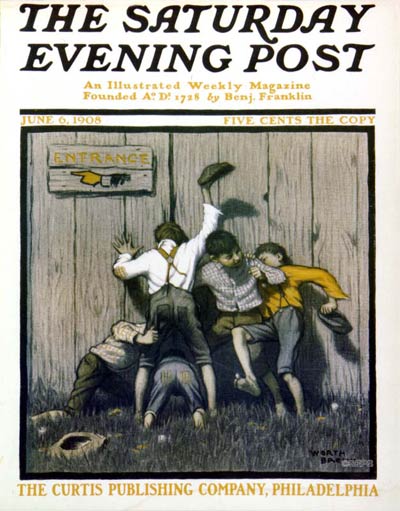
Worth Brehm
June 6, 1908
Cartoons: American Politics

“Maybe there’s only ten of them now, but just wait till the bureaucrats get to work.”

“…the same coffee maker used by the Air Force, now for the amazingly low price of $24.95! That’s a savings of over $4,000.00!”

“I think I prefer the Republicans for clichés, but the Democrats for platitudes.”

“Meanwhile, in Washington, D.C., credibility fell another seven points, reaching a new low for the year.”
Readers’ Favorite Rockwells
We want to hear about your favorite covers from The Saturday Evening Post, whether illustrated by Norman Rockwell or another Post artist. This week we’re reviewing Rockwell favorites from readers and our own staff.
The Gift
Norman Rockwell
January 25, 1936
Helen Palmquist of Lincolnshire, Illinois, went right for a fun one: “My favorite is the little boy looking in Grandpa’s overcoat, not realizing a puppy is in the other pocket.” Rockwell had his beloved Uncle Gil in mind when he created this 1936 cover. Uncle Gil was something of a scientist and inventor, Rockwell wrote in My Life as an Illustrator. “But he did have one eccentricity, he got his holidays mixed up. On Christmas day, with snow on the ground and a cold wind in the trees, Uncle Gil would arrive loaded with firecrackers to celebrate the Fourth of July. On Easter he would bring us Christmas gifts.
“He always had a kind of Christmas spirit about him—jovial, warmhearted, shouting, ‘Warm, Norman, warm!’ as I approached a hidden present and ‘Hurrah!’ when I found it. … I don’t think I have ever enjoyed any gifts as much as I used to Uncle Gil’s.”
Saying Grace
Norman Rockwell
November 24, 1951
Saying Grace is the favorite of Nicole Beer from our staff in Indianapolis, Indiana. “It reminds me of my grandmother even down to the way Rockwell painted the lady’s hands. I remember being a kid and always praying in public with her before we ate. Everyone would always stare at us and it would make me embarrassed. I hated it as a kid but as an adult, I am so thankful for her and the example she set. I can only hope I am as bold with my faith as she was.”
Saying Grace has an interesting history. Click here to read about which of Rockwell’s sons appears in this illustration and how fellow Post artist George Hughes’ discouragement drove Rockwell to complete this painting.
The Marriage License
Norman Rockwell
June 11, 1955
“There is only one that stands head and shoulders above the rest in terms of sheer beauty and deep meaning—The Marriage License,” writes Barbie Thompson of Calgary, Alberta.
“Manning this department, no doubt years before these two lovebirds were even born,” writes Barbie of the elderly clerk, “[he] has seen it all and therefore knows this path all too well—the Good and the Bad, the Happy and Not-So-Happy Endings. The only personal warmth for him now comes from his kitty, those well-smoked cigarettes, and the well-chewed loose tobacco targeted to the spittoon, and the slow-burning, unseen embers from that ancient cast-iron stove.”
Barbie may be more right in that last sentence than she knows. Anne Braman, daughter-in-law of the gentleman who posed as the clerk, wrote in a 1976 Post article that her mother-in law had died the year The Marriage License was painted.
Close-up of elderly clerk.
“Mr. Rockwell—knowing my father-in-law Jason C. Braman—realized how upset he was, and he thought if he could get him to model it would give him something new to think about.”
Rockwell was right about the new activity having a therapeutic effect on the widower, wrote Anne, “As soon as the The Marriage License appeared on the cover of the Post, people recognized him immediately. When his friends commented to him about the cover, he would say, ‘Would you like for me to autograph your copy?’ And he would. When I told Mr. Rockwell about this, he was quite amused.”
[Anne Braman modeled for Rockwell as the schoolteacher in the 1956 cover Happy Birthday Mrs. Jones. Read more about her here.]
Knothole Baseball
Norman Rockwell
August 30, 2958
“I love all baseball covers, but I find this one particularly interesting,” writes Cris Piquinela one of our Post staffers.
“First off, I don’t think most people looking at this cover would think it is a Rockwell. There are no children or people visible, no characteristic facial expressions. However, what I like about this cover is that it forces me to ‘create’ or imagine the scene in my head. I can’t see the person looking through the hole, but I imagine a freckled, redheaded, barefoot kid. At the same time, I can sense the excitement of the pitch, a great hit by the player at bat, and the entire crowd going crazy. This cover does not tell me what I am looking at … it forces me to imagine it. Plus, I love only having a small piece of the image shown to me.”
Rockwell’s carved signature.
It is also interesting to note the way Rockwell “carved” his signature in the painting.
A special thank you to readers (and Post staff) for telling us about your favorite Rockwell covers!
Visit our online gallery to review Post covers by your favorite artist.
Coming soon in our Readers’ Favorites series: readers’ favorite covers from Rockwell’s neighbor, friend, and fellow Post artist George Hughes. If you have a favorite George Hughes cover (and there are 115 to choose from) we’ll be glad to feature it.
View covers by George Hughes here, then email us your name, along with the title and date or just a good description of your favorite piece at [email protected].
Classic Covers: Romance is in the Air
Wherever there is romance, there are overseers, observers or, to put it bluntly, eavesdroppers.
Overheard Lovers
Overheard Lovers
Norman Rockwell
November 21, 1936
Even the most bookish gent can find real life more intriguing than the printed word. This fun but often overlooked 1936 cover is a good example of Norman Rockwell’s droll sensibilty. The set-up was simple: two plain park benches, a disinterested pooch and no background scene to detract from our bookworm’s delightful expression. Rockwell often painted dogs, but it was usually the same spotted mutt that fit in well with his active freckle-faced kids. At one point Post publisher, George Horace Lorimer, asked the artist, “Why do you always use the same mutt in your covers?” Rockwell replied, “I have a good dog and he’s a good model, and I use him because it’s easier.” However, here he used a small, well-dressed breed to go with its rather foppish master.
Fall Gossip Session
Fall Gossip Session
Constantin Alajálov
November 7, 1953
Love is “a condition brought by spring, the glory of autumn, the humidity of summer, winter’s exhilaration or paralysis, and other odd manifestations of nature,” noted Post editors of this 1953 cover. In this quaint autumn painting, artist Constantin Alajálov (1900-1987) focused on three neighbors who seem quite fascinated by a budding romance. A refugee from the Russian Revolution, Alajálov arrived in New York in 1923 and worked his way up painting murals in restaurants to his first New Yorker cover within three years. He painted 73 Post covers from 1945 to 1962.
Eavesdropping on Love
Eavesdropping on Love
Amos Sewell
August 13, 1960
Words of love are in the air, and Post editors speculated they went something like this: “It seems like we’re alone on a desert island. Just you and me and the sun and the surf.” But the lovebirds on Amos Sewell’s 1960 cover have company. “There’s another young couple in the vicinity,” editors noted, “and this mushy discussion positively fractures them.”
The need for cover illustration was waning in the early 1960s, as the Post was going with photographs in order to modernize the magazine’s look. Amos Sewell, who illustrated the first of his 45 covers in 1949, created his final one in 1962. During the ’40s and ’50s, Sewell also produced hundreds of story illustrations for the Post and its sister publication, The Country Gentleman.
Classic Art: The Many Faces of Winter
Post artists portrayed winter’s transformation with meandering paths, trudging footsteps, and rolling hills.
Winter Wonderland
Winter Wonderland
Walter Baum
Country Gentleman
January 1, 1937
Of winter’s lifeless world each tree now seems a perfect part;
Yet each one holds summer’s secret deep down within its heart.
—Charles G. Slater
This scene with its impressionistic, stark, winter trees is an inside illustration from Country Gentleman, a sister magazine of The Saturday Evening Post. The artist, Walter Emerson Baum (1884-1956), was born in Sellersville, Pennsylvania, and painted many landscapes of his home state. He is particularly known for his rugged work ethic; he frequently painted outdoors, even as winter storms raged.
Baum, in addition to illustrating and producing fine art, was an art teacher in Allentown, Pennsylvania, from 1926 to 1956. He was also a writer, a columnist for the Sellersville Herald and eventually he became the paper’s editor. He wrote the book Two Hundred Years, a history of the Pennsylvania Germans in his hometown.
Tumble from Sled
Tumble from Sled
Dominice Cammerota
January 27, 1940
This Dominice Cammerota illustration shows the fun side of winter. The artist painted two more Post covers, also of women enjoying seasonal pastimes: a summer sunbather reading the paper on her rooftop (August 3, 1940) and a springtime gardener in a wheelbarrow (May 10, 1941). If only there was a fall cover to complete the set.
Interestingly in this issue, which went to press while Gone With the Wind was captivating Americans in the theater, an editorial offered up the fate of a fraudulent manuscript purportedly written by Margaret Mitchell, whose book the movie was based on. The editorial included the first paragraph of the 50-page manuscript, noted that the editor had contacted the real Margaret Mitchell, and advised readers: “We’re holding the manuscript,” then asked, “Would the author like to collect it?” Not surprisingly, there were no takers.
No School Today
No School Today
Angus MacDonall
Country Gentleman
January 27, 1923
We don’t know how far this young man trudged through the snow to get to school, but it was all for naught. The sign on the door says it all. This 1923 cover was typical of the humorous, homespun style of Angus MacDonall (1876-1927) who did 21 covers for sister magazines, The Saturday Evening Post and Country Gentleman. He was a cartoonist and illustrator for Life for many years and contributed artwork to other publications such as Harper’s and Ladies’ Home Journal.
MacDonall came from St. Louis but eventually moved to the seaside town of Westport, Connecticut, where he helped establish it as an art colony. Among its list of famous residents throughout the 20th century are Post artist Stevan Dohanos, American author F. Scott Fitgerald, and actor Paul Newman.
Herding in Winter Storm
Herding in Winter Storm
Matt Clark
Country Gentleman
March 1, 1944
Matt Clark (1903-1972) and his brother Benton, also an illustrator of Western art, came from a Coshocton, Ohio, family whose lives revolved around horses. Both artists were inducted into the Society of Illustrators Hall of Fame in 2008. The society, in describing the brothers’ similar styles, summed up this 1944 cover aptly: “Not reliant on close-ups or facial expression to express the emotions of the characters, they used the attitudes or the actions of whole figures to describe their relationships. That also included the settings—letting the landscape play a role.”
The Clark brothers did more than 100 illustrations for fiction in The Saturday Evening Post, and Matt Clark created six Western or rural-themed covers for Country Gentleman magazine.
Snow on the Farm
Snow on the Farm
John Clymer
December 22, 1956
“My approach was to look for human interest subjects and then try to place them in a proper setting to fit the idea,” illustrator John Clymer (1907-1989) said. The children (along with cat and dog) playing in the snow in this 1956 cover are all but overwhelmed by the beautiful landscape. Clymer could say what he liked about his human subjects, but his landscapes always dominated the 80 covers the artist did for the Post.
Painting covers for The Saturday Evening Post was a career highlight for any illustrator, but they often learned the hard way about accuracy, as Clymer told art historian Walt Reed in John Clymer, an Artist’s Rendezvous with the Frontier West: “There was only one drawback about doing covers for the Post. They went everywhere in the country, and because I picked and painted actual places, there would be several hundred people who lived nearby who’d scrutinize every detail to try to find something wrong. There would always be someone like a telephone lineman who’d write in and say, ‘I don’t think that was the kind of insulator they used in that area.’” But only once did Clymer have to correct a cover he submitted: “I sent in a picture that had an automobile in the foreground. I had completed everything, lights, chrome, trim, spokes, but forgot to paint the door handle.”
